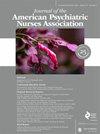求助PDF
{"title":"减少针对妇女和女童暴力的自卫训练:综合评论》。","authors":"Ashlyn M Johnson, Britt S Cole","doi":"10.1177/10783903241254308","DOIUrl":null,"url":null,"abstract":"<p><strong>Background: </strong>Violence against women and girls (VAWG) is a serious threat to individual and public health with vast negative impacts, including numerous physical and mental health issues, as well as societal and economic consequences. Numerous women's self-defense interventions have been proposed to reduce the risk of victimization.</p><p><strong>Aims: </strong>The current integrative review, based on Whittemore and Knafl's framework, was completed to synthesize current evidence on women's self-defense training, the impact of such training on outcomes related to VAWG, and evaluate the strength of evidence for women's self-defense training interventions.</p><p><strong>Methods: </strong>A systematic literature search, guided by the Preferred Reporting Items for Systematic Reviews and Meta-Analyses (PRISMA) statement, was performed including a comprehensive computer-assisted database search, as well as citation searching and website searching for studies that included quantitative outcomes related to VAGW published between 2011 and 2023. Data were extracted and analyzed in accordance with Whittemore and Knafl's (2005) methodology, and the body of evidence was synthesized and best evidence recommendations developed based on the ©The Johns Hopkins Hospital/The Johns Hopkins University Evidence-Based Practice Model.</p><p><strong>Results: </strong>Ultimately, 19 publications met inclusion criteria and were included in this review. Key findings included strong evidence for women's self-defense training to reduce attempted rape, completed rape, and nonconsensual sexual contact, as well as emerging evidence for reduction in posttraumatic stress disorder (PTSD) symptoms, among other positive outcomes.</p><p><strong>Conclusions: </strong>Further research is needed in more diverse populations at risk for violence and to identify key characteristics of effective interventions, including optimal content and dose.</p>","PeriodicalId":17229,"journal":{"name":"Journal of the American Psychiatric Nurses Association","volume":" ","pages":"10783903241254308"},"PeriodicalIF":1.5000,"publicationDate":"2024-05-25","publicationTypes":"Journal Article","fieldsOfStudy":null,"isOpenAccess":false,"openAccessPdf":"","citationCount":"0","resultStr":"{\"title\":\"Self-Defense Training to Reduce Violence Against Women and Girls: An Integrative Review.\",\"authors\":\"Ashlyn M Johnson, Britt S Cole\",\"doi\":\"10.1177/10783903241254308\",\"DOIUrl\":null,\"url\":null,\"abstract\":\"<p><strong>Background: </strong>Violence against women and girls (VAWG) is a serious threat to individual and public health with vast negative impacts, including numerous physical and mental health issues, as well as societal and economic consequences. Numerous women's self-defense interventions have been proposed to reduce the risk of victimization.</p><p><strong>Aims: </strong>The current integrative review, based on Whittemore and Knafl's framework, was completed to synthesize current evidence on women's self-defense training, the impact of such training on outcomes related to VAWG, and evaluate the strength of evidence for women's self-defense training interventions.</p><p><strong>Methods: </strong>A systematic literature search, guided by the Preferred Reporting Items for Systematic Reviews and Meta-Analyses (PRISMA) statement, was performed including a comprehensive computer-assisted database search, as well as citation searching and website searching for studies that included quantitative outcomes related to VAGW published between 2011 and 2023. Data were extracted and analyzed in accordance with Whittemore and Knafl's (2005) methodology, and the body of evidence was synthesized and best evidence recommendations developed based on the ©The Johns Hopkins Hospital/The Johns Hopkins University Evidence-Based Practice Model.</p><p><strong>Results: </strong>Ultimately, 19 publications met inclusion criteria and were included in this review. Key findings included strong evidence for women's self-defense training to reduce attempted rape, completed rape, and nonconsensual sexual contact, as well as emerging evidence for reduction in posttraumatic stress disorder (PTSD) symptoms, among other positive outcomes.</p><p><strong>Conclusions: </strong>Further research is needed in more diverse populations at risk for violence and to identify key characteristics of effective interventions, including optimal content and dose.</p>\",\"PeriodicalId\":17229,\"journal\":{\"name\":\"Journal of the American Psychiatric Nurses Association\",\"volume\":\" \",\"pages\":\"10783903241254308\"},\"PeriodicalIF\":1.5000,\"publicationDate\":\"2024-05-25\",\"publicationTypes\":\"Journal Article\",\"fieldsOfStudy\":null,\"isOpenAccess\":false,\"openAccessPdf\":\"\",\"citationCount\":\"0\",\"resultStr\":null,\"platform\":\"Semanticscholar\",\"paperid\":null,\"PeriodicalName\":\"Journal of the American Psychiatric Nurses Association\",\"FirstCategoryId\":\"3\",\"ListUrlMain\":\"https://doi.org/10.1177/10783903241254308\",\"RegionNum\":4,\"RegionCategory\":\"医学\",\"ArticlePicture\":[],\"TitleCN\":null,\"AbstractTextCN\":null,\"PMCID\":null,\"EPubDate\":\"\",\"PubModel\":\"\",\"JCR\":\"Q3\",\"JCRName\":\"NURSING\",\"Score\":null,\"Total\":0}","platform":"Semanticscholar","paperid":null,"PeriodicalName":"Journal of the American Psychiatric Nurses Association","FirstCategoryId":"3","ListUrlMain":"https://doi.org/10.1177/10783903241254308","RegionNum":4,"RegionCategory":"医学","ArticlePicture":[],"TitleCN":null,"AbstractTextCN":null,"PMCID":null,"EPubDate":"","PubModel":"","JCR":"Q3","JCRName":"NURSING","Score":null,"Total":0}
引用次数: 0
引用
批量引用
Self-Defense Training to Reduce Violence Against Women and Girls: An Integrative Review.
Background: Violence against women and girls (VAWG) is a serious threat to individual and public health with vast negative impacts, including numerous physical and mental health issues, as well as societal and economic consequences. Numerous women's self-defense interventions have been proposed to reduce the risk of victimization.
Aims: The current integrative review, based on Whittemore and Knafl's framework, was completed to synthesize current evidence on women's self-defense training, the impact of such training on outcomes related to VAWG, and evaluate the strength of evidence for women's self-defense training interventions.
Methods: A systematic literature search, guided by the Preferred Reporting Items for Systematic Reviews and Meta-Analyses (PRISMA) statement, was performed including a comprehensive computer-assisted database search, as well as citation searching and website searching for studies that included quantitative outcomes related to VAGW published between 2011 and 2023. Data were extracted and analyzed in accordance with Whittemore and Knafl's (2005) methodology, and the body of evidence was synthesized and best evidence recommendations developed based on the ©The Johns Hopkins Hospital/The Johns Hopkins University Evidence-Based Practice Model.
Results: Ultimately, 19 publications met inclusion criteria and were included in this review. Key findings included strong evidence for women's self-defense training to reduce attempted rape, completed rape, and nonconsensual sexual contact, as well as emerging evidence for reduction in posttraumatic stress disorder (PTSD) symptoms, among other positive outcomes.
Conclusions: Further research is needed in more diverse populations at risk for violence and to identify key characteristics of effective interventions, including optimal content and dose.


